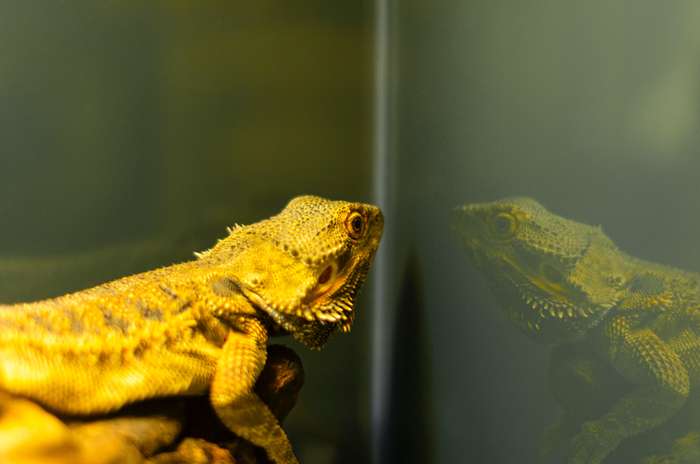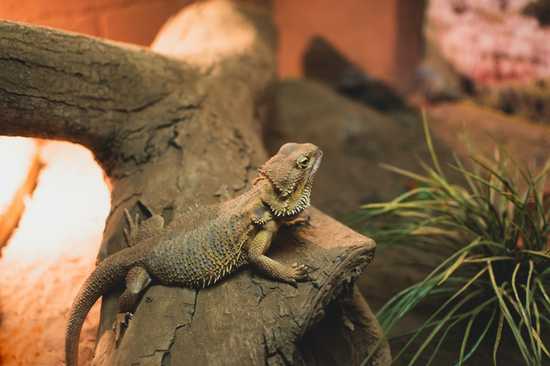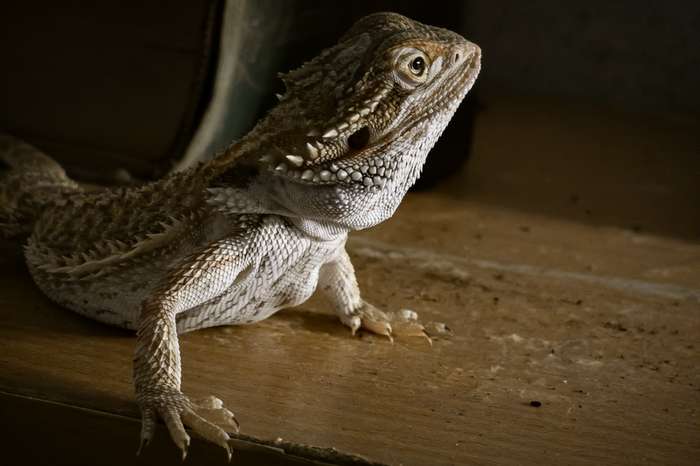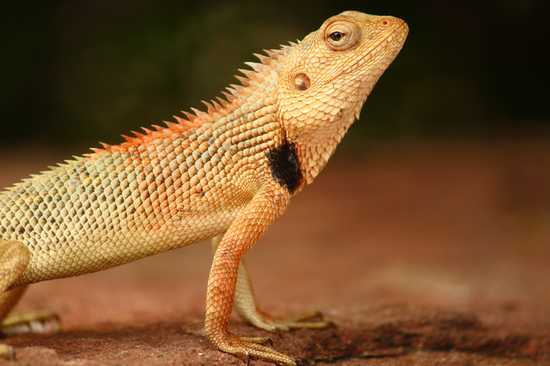How to bathe a bearded dragon seems like a very simple task. But there are a few important things to know before proceeding. It is one of the most fun and exciting things you can do with your bearded dragon baths. Most bearded dragons love a nice warm bath now and then.
Furthermore, the breaded dragon is a consistent bath for your bearded dragons. Which are also very important for proper hygiene. Let’s see how to bathe a bearded dragon.
This article will tell you how to bathe your bearded dragon. Starting with gathering materials and cleaning. It allows you to safe bathe your bearded dragon from start to finish. Let’s get started.

Why do bearded dragons need baths?
Before you read about how to bathe your bearded dragon. You may still be wondering: If bearded dragons can’t bathe in the wild, do bearded dragons need baths? Bathing your bearded dragon has many benefits.
Setting up the bath:
The most important thing to remember. When bathing a bearded dragon is the depth and temperature of the water. Swear at your bearded dragon while bathing!
Bath water should not be deeper than the limbs’ knuckles. If you are using slight deeper water, keep a close eye on your bearded dragon the entire time it is in the water. Once you have a suitable bathing area, fill it with warm water. Make sure the water is not too hot. You don’t want to scald your bearded dragon. It is ideal to use water between 85 and 92 degrees F. It will keep the bearded dragon warm while bathing. But will not cause scalding or discomfort.
- For baby and juvenile bearded dragons, fill the tub with about half an inch of water to one inch.
- For adults, you can fill the bathtub with one to three centimeters of water, depending on its size. Remember; don’t fill the tub too deep.
Bathing the bearded dragon:
Never use any soaps or detergents when bathing your bearded dragon. A bearded dragon will likely drink a few glasses of water. And you don’t want him to drink any foamresh tap water that has dechlorinated.
The best method is to use a paper cup and light pour water up and down the bearded dragon’s back and tail. Avoid pouring water around the eyes and nose.
Allow the bearded dragon to splash around. Most bearded dragons love water and will enjoy a nice dip.
Let the bearded dragon soak in the water for at least 15 to 20 minutes. This makes it absorb well, which helps the skin, especially during shedding.

Cleanliness and hygiene:
Baths help keep your bearded dragon free of mold, parasites, and bacteria. Especially if he has a habit of messing around in his poop.
Playtime and bonding:
Many dragons love a bath. It’s a great way to release their wild side and have fun. It can also be a great opportunity to strengthen your relationship with your pet.
Healthy skin:
Keep your dragon’s skin healthy and prevent it from getting too dry.
Hydration:
Besides to providing a water bowl and hydrating foods. Like cucumbers and grapes, baths can be a great way to keep your dragon hydrated. Bearded dragons absorb water through their skin and drink it simultaneous. So a nice soak can give them the extra hydration they need.
Reduce constipation and shedding:
Constipation and shedding make your dragon very uncomfortable. A nice warm bath offers much-needed relief.
When the bath finished:
The bearded dragon bath done; you can gentle dry it with a soft cloth. This is very important if you use a loose substrate such as Repti Sand.
It is also important to dry off the bearded dragon and get it back under the warming lights so it can warm up again. It is especially necessary if it is during the cold winter months. Being without heat for an hour or two won’t hurt your bearded dragon. But getting him back into heat as soon as possible is recommend.
Bath your bearded dragon frequently:
You should splash your bearded dragon in warm water about once a week. Twice a week works even better in the summer months.
Bathing can help your bearded dragon’s. Hygiene by removing old skin and scales. Bathing also helps clean and remove any bacteria and germs that build up on the feet. And nails and can help with shedding.
Water bowl, sink or bathtub:
A sink would also work for baby dragons. But that would depend great on how confident you are in your control. And that your bearded dragon won’t run away, resulting in possible injury.
The safest option is a small bowl for hydration when needed.
Sitting in water can cause various problems for your bearded dragon. From scale rot to other bacterial and fungal problems.
If your kite is sitting in water a lot, it’s more likely due to an environmental problem. For example, the terrarium’s temperature may be too high. So the dragon tries to cool its core temperature.
Mites can also cause a dragon to wet itself for relief.
Water temperature:
You also need to check the water temperature. Since your bearded dragon is cold-blooded, you cannot use cold water. At the same time, you don’t want to burn your bearded dragon. Instead, use a thermometer to make sure the water is between 85 and 92 degrees Fahrenheit. This temperature is warm enough but will not burn them.
Water chlorination:
Tap water is the best choice for bathing your bearded dragon. In most cases, the tap water will be completely clean. And suitable for bathing and drinking your bearded dragon. Depending on where you live, you may need to invest in a water de-chlorinator. Investing in a reptile conditioner can only benefit your bearded dragon. Even if you think your water is safe.
Can I use soap on my bearded dragon:
Not. No products should ever used in bath water. Not only can these be harmful if the bearded dragon drinks the water, but they can also affect its eyes, ears, and nose.
Use only clean tap water.

Dragons can absorb chemical residue through their skin. Which tend to drink too much water during baths. Even if you use all-natural sprays and cleaners. Your dragon is at risk of absorbing or ingesting something harmful. Especially if he is regular exposed to bathing. The same goes for shampoos and soaps, which often stick to the walls and floor of the tub.
So for the sake of your hygiene and your dragon’s health and safety. It’s best to have a separate bath for your bearded dragon.
Bearded dragon calcium baths:
Suppose the bearded dragon has problems with hydration or lack of calcium. A vet can only diagnose through blood tests and a physical exam. Not a social media recommendation.
Adding a few drops of liquid calcium to the water source is fine. But the dragon will only hydrate or benefit if the water is take.
Bearded dragon bath behavior:
Swimming:
Bearded dragons can swim, which they occasion need in their natural habitat. They often submerge completely and swim very much like a crocodile.
Pooping:
It is the most common reason. I see on social media when people buy their bearded dragons. Because they worry that their dragon hasn’t pooped in days.
Warm water is a muscle relaxant, and this can and often does cause a bearded dragon to poop in the bathtub.
But, you have to understand. That our bearded dragon guts and digestive system are not like our own. It designed to harness moisture and nourishment for absolute largest benefit. It will even try to pull in more moisture while all the waste and urates are in that area of the intestines.
So with the warm water. Their muscle relaxant, poop produced is often extreme premature. Because it is not full utilized for hydration and nutrition.
Then, this could have negative effects on hydration.
How do you dry a bearded dragon after a bath?
Drying a bearded dragon after a bath should only involve a towel. The point is to wrap and dry (never scrub). Never use a hair dryer or fans (yes – I’ve seen them used).
What to do if your bearded dragon hates baths:
During a bath, it’s normal to see your dragon purring in an attempt to make himself happier. But if your dragon is franticale puffing, flapping, splashing around, or swimming. Especially toward the edge of the container, it’s very stressed and afraid. You can do a few things if your bearded dragon hates baths.
Be gentle:
If the water is not too cold or too high, you may need to slow acclimate your bearded dragon to swimming. During bath time, ensure the water is quite shallow. And you are very calm and gentle with your dragon the whole time.
Try a smaller tub:
If you use a large sink, tub, or basket, your dragon may be afraid of the size. You can try a smaller container with shorter walls to make him feel less threatened.
Offer a rock:
You can also try providing the dragon with a rock or something solid to climb on. So it can get in and out of the water if it wants to. The stone can give your dragon a sense of security and help her overcome bath anxiety.
Mist daily:
If you can’t seem to calm your dragon in the bath, it may not be worth the stress to bathe him more than once a week. While it’s not ideal to completely drain the bath. You can try misting your dragon once a day to hydrate and clean it a bit between baths.
Final words:
Bathing your bearded dragon is easy. An effective and fun way to keep your bearded dragon clean, healthy, and happy. Not to mention, it’s a great way to bond with your bearded dragon. Ensure you provide a safe and appropriate amount of water and temperature. Ensure your bearded dragon stays safe throughout the process.
As long as you are diligent about offering the right water. your bearded dragon will love to splash during the bath!

